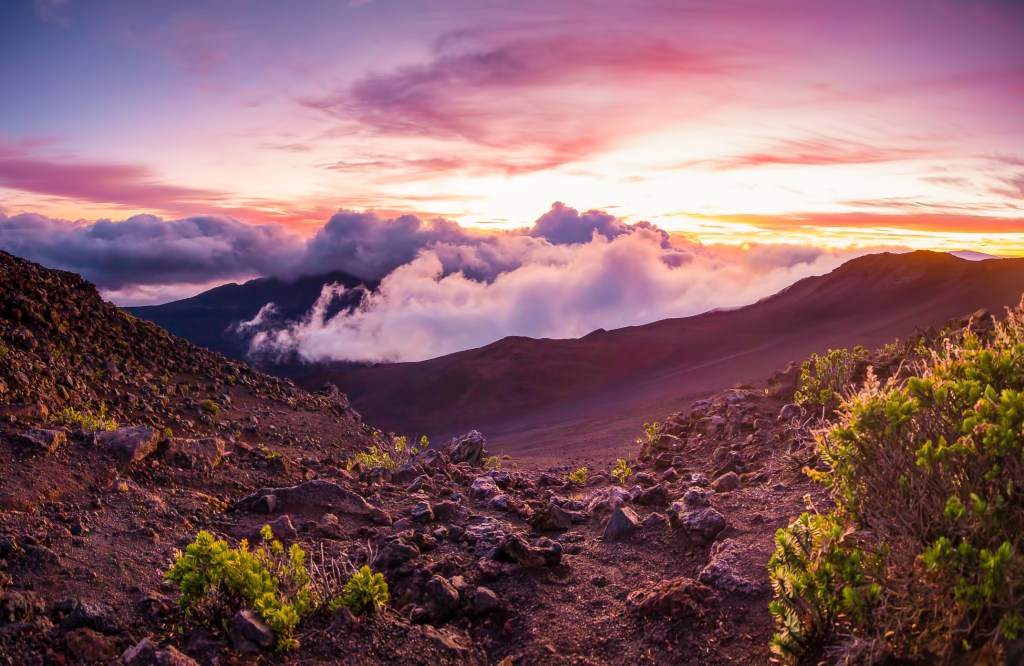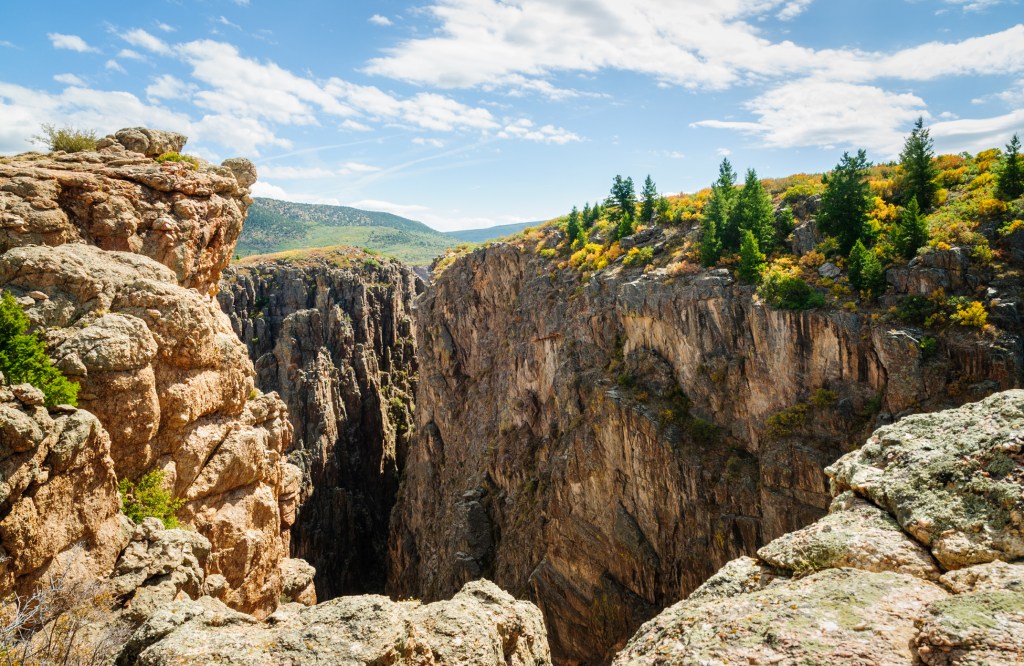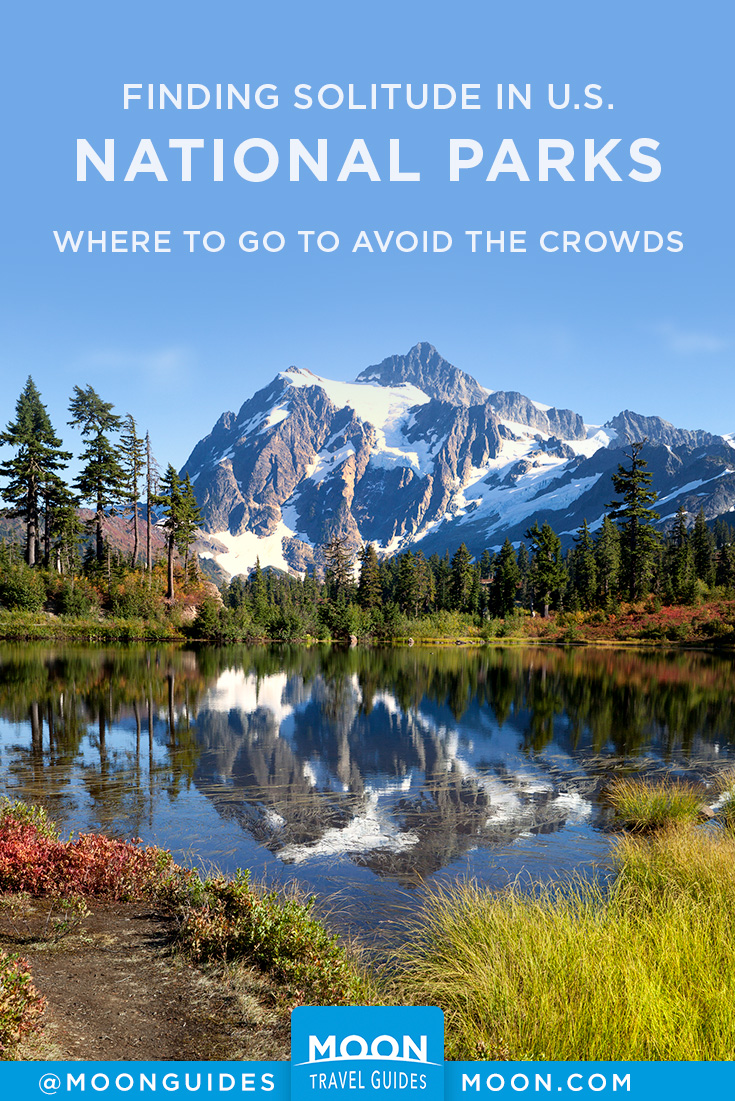Best National Parks Without the Crowds
These lesser-visited parks offer some breathing room away from the crowds, with plenty of time to bask in the beauty of the landscape. Here are the best national parks for a moment of solitude.
North Cascades, Washington

Best time to visit: June – September
Snow and ice distinguish Washington’s North Cascades National Park, which holds Alaska-like mountains studded with more than 300 glaciers—more than any other park in the Lower 48. Most visitors only drive the North Cascades Highway. But beyond the road, a vast wilderness contains ice-chewed peaks, sapphire lakes, and long fjord-like waters.
Access to these is via foot, horse, or boat, just as it was for the Indigenous Chelan and Upper Skagit people, a few of the many tribes with roots here. Pick up a backcountry permit and stay overnight in a shoreline camp on Ross Lake, and backpack into the mountains to put down some solitary miles.
Great Basin, Nevada
Best time to visit: June – September
In eastern Nevada, Great Basin is far off the beaten track. With mountains pushing up from a huge desert, the park is an island amid a former shallow inland sea. Its vertical diversity plunges from high peaks to underground limestone caves.
Few visit Great Basin, which means you can explore those underground caves or climb the trail to Wheeler Peak—the best hike in the park—crowd-free.
Theodore Roosevelt, North Dakota

Best time to visit: May – September
Grasslands and badlands collide around the Little Missouri River in Theodore Roosevelt National Park. This otherworldly park might appear barren at first glance, but it contains the kind of raw beauty favored by its namesake president. Most visitors head for the park’s South Unit, but you can find secluded nooks in the badlands of the North Unit or at Roosevelt’s favorite, the Elkhorn Ranch.
Wildlife-watching can rival some of the best parks, with bison, pronghorn, deer, and elk. Feral or wild horses are one of the biggest attractions, especially in May when you can watch young foals.
Gates of the Arctic, Alaska
Best time to visit: June – August
This vast wilderness spans the Brooks Range with no established roads, trails, or campgrounds. Access to this remote arctic park is only by air. Once you’re dropped off, you can float or paddle a Wild and Scenic River or backpack through the trail-less wilderness. Along with nearby Kobuk Valley National Park, this wilderness park is devoid of trails, roads, campgrounds, lodgings, visitor centers, and cell service. There are no entrance fees—or even entrances. It’s this very wildness that is the draw.
Haleakalā, Hawaii

Best time to visit: February – September and December
“Hale-a-ka-la,” means House of the Sun, and few places are more aptly named than this 10,023-foot volcano. Believed to have been dormant since 1790, Haleakalā is 30,000 feet tall when measured from the seafloor. It’s also a fragile ecological treasure, with more endangered species than any other national park.
Visitors flock to the summit of this volcano to watch the sun rise. After that, parking spots open up and crowds dissipate. Come for sunset instead, when there are fewer people.
Guadalupe Mountains, Texas
Best time to visit: March – May and October
Where else can you hike ancient fossil reefs—without fighting for a spot on the trail? The ancient Permian Sea gave birth to reefs full of small creatures that fossilized when it dried up, and, through faulting, those limestone reefs rose into the Guadalupe Mountains.
Due to the elevation difference between the Chihuahuan Desert floor and the steep summits, the mountains’ rocky slopes comprise both sagebrush and cactus lowlands and pine-juniper forests. This landscape hides geological wonders and rock art from the original occupants—the Nde (Mescalero Apache) people.
And thanks to the park’s low visitation, you may get the opportunity to stand alone on the highest summit in Texas, overlooking the Chihuahuan Desert.
By clicking ‘Sign Up,’ I acknowledge that I have read and agree to Hachette Book Group’s Privacy Policy and Terms of Use
Wrangell-St. Elias, Alaska

Best time to visit: June – August
The largest national park in the United States is a magnet for mountaineers, backcountry hikers, and those wanting to see a glacier up close. It’s home to millions of acres of solitude, especially along its less traveled Nabesna Road. The park ranks in the country’s record books with the largest designated wilderness, one of the largest volcanoes, half of the 16 highest peaks, and the biggest collection of glaciers. Serious backpackers come for solitude at turquoise lakes while wildlife-watchers aim binoculars at bears, Dall sheep, mountain goats, lynx, and wolves.
Channel Islands, California
Best time to visit: June – August
Despite being off the coast of the most populated state, Channel Islands National Park ranks low for visitation (currently coming in at 50th place). This remote archipelago draws comparisons to the Galápagos Islands due to isolation causing the evolution of animals and plants to occur independently from the mainland. 281 species of endemic plants, such as the live-forever, only grow on the islands.
Most visitors arrive by boat and only stay for the day. Plan to camp overnight and you’ll have an island nearly to yourself, especially on Anacapa (which has only seven campsites).
Black Canyon of the Gunnison, Colorado
Best time to visit: May – September

In western Colorado, Black Canyon of the Gunnison sits southeast of Grand Junction between Montrose and Gunnison. This narrow, deep chasm cuts through volcanic rock to create one of the country’s most dramatic canyons. The park’s North and South Rims are only 0.25 mi (0.4 km) apart in places; however, to get from one rim to the other takes 2-3 hours of driving. While the South Rim has popular overlooks, anyone willing to make the long drive to the North Rim will likely be rewarded by having the place to yourself.
Isle Royale, Michigan
Best time to visit: June – September
Seasonal ferries guide visitors to this isolated archipelago set in the midst of Lake Superior, a wilderness that is home to wolves and moose. Located near the border with Canada, this wilderness park encompasses an archipelago of the 45-mi-long (72-km) Isle Royale and about 400 tiny islands. More than 80 percent of the park is underwater.
With a visitation rank of 58, you can paddle alone around the island’s 337 miles of shoreline.
Plan your national parks adventure
Pin it for later






